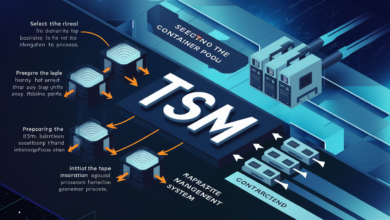Gunter16 in the Lab: Unveiling the Power of Innovation

In today’s rapidly evolving technological landscape, the integration of cutting-edge systems and software into various research fields has become a cornerstone of advancement. Among the diverse tools that researchers and innovators use, Gunter16 has emerged as a remarkable resource, aiding in the exploration of new frontiers in science, engineering, and technology. While the name “Gunter16” may not yet be widely recognized by the public, its applications and contributions to laboratory research and development are immense. This article delves into the origins, purpose, functions, and impact of Gunter16 in laboratory settings, highlighting its significance in pushing the boundaries of innovation.
Introduction to Gunter16
Gunter16 is a state-of-the-art computational tool designed to assist researchers in performing complex calculations, simulations, and data analyses across various scientific domains. At its core, Gunter16 is a sophisticated software platform that provides laboratory professionals with the computational power to streamline their workflow and optimize research outcomes. The name “Gunter16” represents both a nod to the innovative nature of the tool and the version number, which highlights the iterative nature of its development.
This tool was designed to cater to a wide range of scientific fields, including physics, chemistry, biology, engineering, and computer science. Its versatility stems from its ability to adapt to diverse datasets and problems, providing customized solutions for specific research needs. With powerful algorithms and an intuitive interface, Gunter16 empowers users to analyze large datasets, simulate experimental scenarios, and model complex systems, all while minimizing the margin for error that might otherwise compromise research accuracy.
The software has evolved over time, incorporating feedback from the scientific community and refining its features to meet the growing demands of laboratory researchers. As a result, Gunter16 is now an indispensable asset in many laboratories worldwide, driving advancements in fields ranging from material science to biotechnology.
Origins and Development of Gunter16
The origins of Gunter16 can be traced back to a team of scientists and engineers who recognized the need for a comprehensive, flexible computational tool that could address the increasing complexity of modern research. Early on, it became apparent that researchers were struggling to find software solutions that could handle the vast amounts of data generated by contemporary experiments while still providing accurate and reliable insights.
The initial development of Gunter16 was driven by a collaboration between computer scientists, statisticians, and laboratory researchers. The goal was to create a tool that was not only powerful in its computational capabilities but also user-friendly enough to be accessible to researchers who may not have a deep background in programming or data science. This led to the incorporation of a highly intuitive graphical user interface (GUI) alongside robust computational engines, making Gunter16 both efficient and approachable.
The development of Gunter16 was iterative, with each version building upon the previous one to introduce new functionalities, enhance performance, and improve user experience. As more laboratory professionals began to adopt the tool, the development team incorporated their feedback, ensuring that the software met the needs of researchers from various fields. This iterative approach allowed Gunter16 to evolve into a versatile platform that could accommodate the diverse and often specialized requirements of different scientific disciplines.
Key Features of Gunter16
Gunter16’s utility in laboratory research is largely attributed to its impressive array of features that allow for the efficient handling of data and the execution of complex computational tasks. Below are some of the key features that make Gunter16 an indispensable tool in the lab:
1. Data Processing and Analysis
One of the central functions of Gunter16 is its ability to process large datasets quickly and efficiently. In scientific research, data acquisition is often the first step in a series of complex analyses, and Gunter16’s powerful algorithms are designed to handle these large volumes of data. Whether the data comes from experiments in a laboratory or simulations performed using computational models, Gunter16 provides tools for cleaning, transforming, and analyzing the data.
The software is equipped with a variety of built-in statistical methods that allow users to perform common analyses such as regression, clustering, and hypothesis testing. Researchers can also create custom scripts or integrate third-party tools to perform more advanced statistical analyses tailored to their specific needs.
2. Simulation Capabilities
Another hallmark of Gunter16 is its ability to simulate experimental scenarios and predict outcomes based on a set of initial conditions. This feature is especially valuable in fields such as physics and engineering, where physical models are often used to understand complex phenomena that cannot easily be replicated in a laboratory setting. Gunter16 provides a framework for running simulations of physical systems, chemical reactions, biological processes, and more.
By modeling these systems, Gunter16 enables researchers to test hypotheses, explore potential outcomes, and optimize their experimental designs before conducting real-world experiments. This can save both time and resources by allowing researchers to refine their methods and identify potential issues before they arise.
3. Customizable Workflows
The flexibility of Gunter16 is further enhanced by its ability to support customizable workflows. Researchers can design their own analysis pipelines by combining different tools and techniques, tailoring the software to suit the specific needs of their project. Whether it’s a series of data processing steps, a multi-stage simulation, or a complex optimization problem, Gunter16 allows users to create workflows that match their research goals.
This customization is particularly useful in fields that require highly specialized approaches, such as synthetic biology or advanced materials science. Researchers in these fields can use Gunter16 to create workflows that mirror the specific steps involved in their experiments, ensuring that the software can meet the unique demands of their research.
4. Visualization Tools
Effective data visualization is an essential aspect of scientific research, as it allows researchers to quickly interpret their results and communicate findings to others. Gunter16 includes a range of data visualization tools that enable users to generate high-quality plots, charts, and graphs. Whether it’s a simple scatter plot, a heatmap, or a 3D surface plot, Gunter16 provides the tools needed to transform raw data into meaningful visual representations.
The software also supports interactive visualizations, allowing users to manipulate the data in real-time and explore different aspects of their datasets. This feature is particularly useful when working with complex, multi-dimensional data, as it allows researchers to quickly identify patterns and relationships that may not be immediately apparent in raw numbers.
5. Integration with Other Software and Databases
Another standout feature of Gunter16 is its ability to integrate seamlessly with other software and databases commonly used in laboratory research. Whether it’s interfacing with laboratory instruments, importing data from external sources, or connecting with cloud-based services, Gunter16’s open architecture makes it easy to incorporate additional tools into the workflow.
For example, researchers can use Gunter16 to import data from laboratory instruments such as spectrometers, microscopes, or chromatographs, allowing them to analyze and process the data in real-time. Additionally, Gunter16 can connect with external databases, such as genetic sequence repositories or chemical compound libraries, enabling researchers to access vast amounts of information and incorporate it into their analyses.
Applications of Gunter16 in the Laboratory
Gunter16’s versatility makes it an invaluable tool in a wide range of laboratory environments. Below are some of the key areas where Gunter16 is being used to drive innovation and accelerate research:
1. Biotechnology and Life Sciences
In the field of biotechnology, Gunter16 is helping researchers develop new drugs, analyze genetic data, and model complex biological systems. With the advent of high-throughput sequencing technologies, researchers are generating vast amounts of genomic data, and Gunter16’s data processing and analysis capabilities are essential for making sense of this information.
Gunter16 is also being used to simulate biological processes, such as protein folding or metabolic pathways, to better understand how biological systems function. These simulations can provide insights into disease mechanisms, helping to identify potential therapeutic targets and inform the development of new treatments.
2. Material Science and Engineering
In material science and engineering, Gunter16 is being used to model the properties of new materials, simulate their behavior under different conditions, and optimize their performance for specific applications. For example, Gunter16 is helping researchers design new polymers, composites, and nanomaterials with improved strength, conductivity, or other desired properties.
By simulating the molecular structure and behavior of materials, researchers can predict how they will respond to external forces such as temperature, pressure, or electrical fields. This can help accelerate the development of new materials for use in a wide range of industries, from electronics to aerospace.
3. Environmental Science
Gunter16 is also being used in environmental science to model ecological systems, simulate climate change scenarios, and assess the impact of human activities on the environment. With its ability to handle large datasets and perform complex simulations, Gunter16 is helping researchers better understand how environmental factors interact and influence each other.
For example, Gunter16 is being used to simulate the effects of different climate change scenarios on global ecosystems, allowing researchers to predict how species distributions and ecosystem dynamics may change in the future. This information is critical for developing strategies to mitigate the effects of climate change and protect biodiversity.
4. Physics and Astrophysics
In the field of physics, Gunter16 is being used to model complex physical systems and run simulations of everything from particle collisions to cosmological phenomena. With its powerful computational engines, Gunter16 allows researchers to explore theories and conduct experiments that would otherwise be difficult or impossible to replicate in a laboratory.
For example, astrophysicists are using Gunter16 to simulate the behavior of stars, black holes, and galaxies, helping to answer fundamental questions about the nature of the universe. Similarly, in particle physics, Gunter16 is being used to model the interactions of subatomic particles, contributing to our understanding of the fundamental forces of nature.
Conclusion: The Future of Gunter16 in the Lab
As science and technology continue to advance, tools like Gunter16 will play an increasingly important role in shaping the future of laboratory research. Its ability to process large datasets, simulate complex systems, and support customized workflows makes it a powerful asset for researchers in a wide range of disciplines. By enabling faster, more accurate analyses and simulations, Gunter16 is helping to accelerate the pace of scientific discovery and open up new possibilities for innovation.
Looking ahead, the future of Gunter16 appears bright. With ongoing developments in artificial intelligence, machine learning, and cloud computing, Gunter16 is poised to become even more powerful and accessible, further enhancing its capabilities and extending its reach. As researchers continue to push the boundaries of what is possible in their respective fields, tools like Gunter16 will remain at the forefront of scientific innovation, enabling the next generation of breakthroughs that will shape our world.



